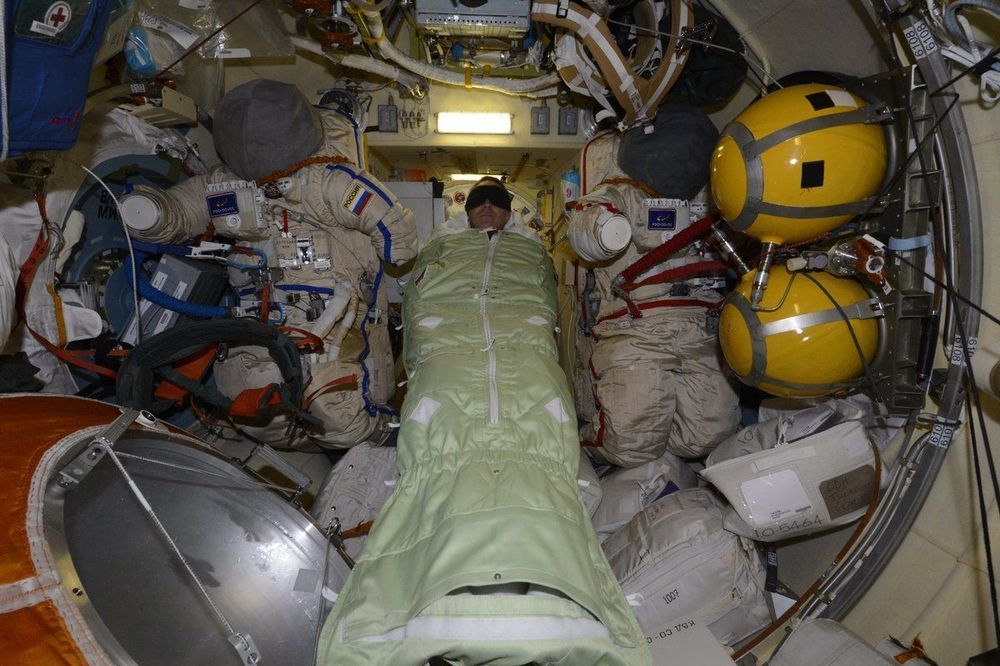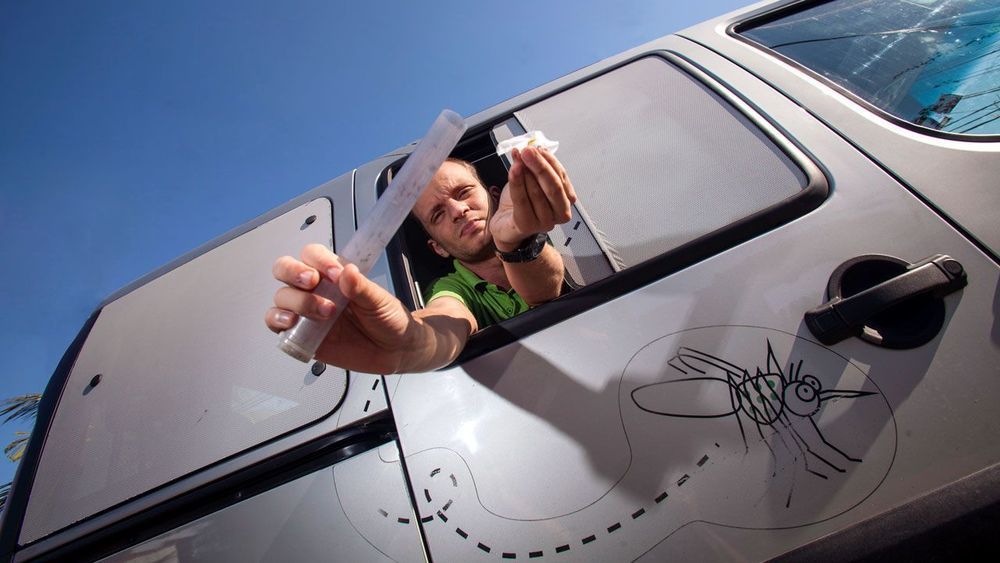Astronauts will spend another night in the International Space Station’s Russian segment while ground controllers continue to search for the source of an air leak on the orbiting lab.



Nov 2019 NATIONAL HARBOR, MARYLAND
—In a handful of cities around the world, mosquitoes have been armed with a microscopic weapon against disease. The bacterium Wolbachia pipientis blocks the insects’ ability to spread fearsome viruses such as dengue, Zika, and chikungunya. Since 2011, researchers have been injecting Wolbachia into the eggs of Aedes aegypti mosquitoes and releasing the hatched insects, which spread this protection to their offspring. But the field has been waiting for evidence that this approach actually reduces disease in people.
Field trials suggest public health benefit to spreading Wolbachia.
Your dreams of piloting a giant mech are now reality.


Benjamin Franklin FRS FRSA FRSE (January 17, 1706 [O.S. January 6, 1706] – April 17, 1790) was an American polymath and one of the Founding Fathers of the United States. Franklin was a leading writer, printer, political philosopher, politician, Freemason, postmaster, scientist, inventor, humorist, civic activist, statesman, and diplomat. As a scientist, he was a major figure in the American Enlightenment and the history of physics for his discoveries and theories regarding electricity. As an inventor, he is known for the lightning rod, bifocals, and the Franklin stove, among other inventions.[1] He founded many civic organizations, including the Library Company, Philadelphia’s first fire department,[2] and the University of Pennsylvania.[3]
Franklin earned the title of “The First American” for his early and indefatigable campaigning for colonial unity, initially as an author and spokesman in London for several colonies. As the first United States ambassador to France, he exemplified the emerging American nation.[4] Franklin was foundational in defining the American ethos as a marriage of the practical values of thrift, hard work, education, community spirit, self-governing institutions, and opposition to authoritarianism both political and religious, with the scientific and tolerant values of the Enlightenment. In the words of historian Henry Steele Commager, “In a Franklin could be merged the virtues of Puritanism without its defects, the illumination of the Enlightenment without its heat.”[5] To Walter Isaacson, this makes Franklin “the most accomplished American of his age and the most influential in inventing the type of society America would become.


We’re all impatient for solid recommendations based on rigorous testing and established facts, but in a fast-moving field, that’s rarely possible. And someone always has to be the guinea pig. This was just as true 130 years ago when Niels Ryberg Finsen began experimenting with treating disease with UV light. He started by testing on himself.
Niels Ryberg Finsen pioneered therapeutic ultraviolet lamps and won himself a Nobel Prize.

Artificial intelligence applications are popping up everywhere these days, from our Internet browsing to smart homes and self-driving cars. Now a group of researchers is launching a new AI-led study that will collect data from recently released prisoners. The ultimate goal of the project is to identify – and, ostensibly, one day eliminate – the psychological and physiological triggers that cause recidivism among parolees.
According to project-leads Marcus Rogers and Umit Karabiyik, the resulting data will assist them in conducting a forensic psychological analysis. While the monitoring will be gauged in intervals – not real-time – they believe it will help build a profile of the risky behaviors and stressful triggers that recent parolees face when returning to the outside world.
California company NDB says its nano-diamond batteries will absolutely upend the energy equation, acting like tiny nuclear generators. They will blow any energy density comparison out of the water, lasting anywhere from a decade to 28,000 years without ever needing a charge. They will offer higher power density than lithium-ion. They will be nigh-on indestructible and totally safe in an electric car crash. And in some applications, like electric cars, they stand to be considerably cheaper than current lithium-ion packs despite their huge advantages.
The heart of each cell is a small piece of recycled nuclear waste. NDB uses graphite nuclear reactor parts that have absorbed radiation from nuclear fuel rods and have themselves become radioactive. Untreated, it’s high-grade nuclear waste: dangerous, difficult and expensive to store, with a very long half-life.
This graphite is rich in the carbon-14 radioisotope, which undergoes beta decay into nitrogen, releasing an anti-neutrino and a beta decay electron in the process. NDB takes this graphite, purifies it and uses it to create tiny carbon-14 diamonds. The diamond structure acts as a semiconductor and heat sink, collecting the charge and transporting it out. Completely encasing the radioactive carbon-14 diamond is a layer of cheap, non-radioactive, lab-created carbon-12 diamond, which contains the energetic particles, prevents radiation leaks and acts as a super-hard protective and tamper-proof layer.

An adorable little tugboat as long as a Ford F-150 is making the rounds on social media, prompting many to call it the “smallest ship in the U.S. Navy.”
At just 19 feet long, the boat is actually “Boomin Beaver” security tug. Originally built to herd logs in waterways, the Navy boat is now an all-purpose vessel that can tow small ships and deploy floating security fences, ensuring that larger submarines, destroyers, and even aircraft carriers don’t receive unwanted visitors.
⚓️ You like badass boats (no matter how small). So do we. Let’s nerd out over them together.